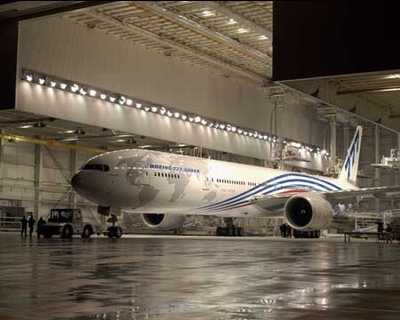No Fatalities, 9 Injuries
 The year 2002 may well be remembered
as the worst ever for the America's major airlines financially.
Combined, they lost $11.3 billion. But 2003 stands out for another
reason. It was also the safest year to fly commercial -- ever.
The year 2002 may well be remembered
as the worst ever for the America's major airlines financially.
Combined, they lost $11.3 billion. But 2003 stands out for another
reason. It was also the safest year to fly commercial -- ever.
There were no deaths due to air accidents in 2002. Nine people
were seriously injured throughout the 12-month period. That was
attributed mostly to in-flight turbulence, bumps and bruises on
evacuation slides and other relatively minor incidents.
There Is A Safety Downside
Aviation experts quoted in the Washington Post say
spending on research, equipment and training has been reduced so
airlines can pay for more security in the wake of the Sept. 11
attacks. Just last week, federal regulators said they were
concerned about contract maintenance operations that the airlines
are increasingly relying on to save money.
Some industry executives say complacency could well lead airline
workers to let down their guard and airline executives to
eventually question whether the money they've spent on safety while
cutting so many other things couldn't be trimmed just a tad.
"The absolute focus from a national resource point of view is
being poured into security," said Stuart Matthews, president of the
Flight Safety Foundation, as quoted in the Post. "Safety is a
never-ending task. I'm not going to say the system isn't safe, but
if we don't pour money into safety, we'll plateau."
Industry Slump Good For Safety In The Future?
 As bad as last year was
for business, the tremendous slump in commercial aviation has
provided airlines with some opportunities to make things a little
safer. A lot of airlines have grounded older aircraft and laid off
less-experienced pilots and mechanics. That leaves them relying on
more modern aircraft systems which, because they're relatively new,
need less maintenance. As airlines continue laying off flight and
cabin crews, as well as mechanics, only the most seasoned employees
are left to fly and maintain their aircraft.
As bad as last year was
for business, the tremendous slump in commercial aviation has
provided airlines with some opportunities to make things a little
safer. A lot of airlines have grounded older aircraft and laid off
less-experienced pilots and mechanics. That leaves them relying on
more modern aircraft systems which, because they're relatively new,
need less maintenance. As airlines continue laying off flight and
cabin crews, as well as mechanics, only the most seasoned employees
are left to fly and maintain their aircraft.
Then again, airlines have plenty of reasons to be overly
cautious these days. Carrier management and crews say a financially
troubled airline might be just one crash away from changing
addresses to the airliner boneyard in Pima (AZ).
"We in the industry have learned the hard way in the past, and
we don't want to go down that road again," said Joe Chronic, vice
president for flight operations at America West Airlines. So far,
America West has avoided a post-Sept. 11, 2001, money meltdown.
Part of that can be attributed to a $380 million loan guarantee
from the government.

The NTSB says there were 34 commercial airline accidents last
year. Most, however, were designated "minor." The board designated
only one accident as "major" -- a Federal Express Corp. cargo crash
at Tallahassee (FL) where the aircraft was completely destroyed the
plane, and the only "serious" passenger aircraft accident was an
America West plane that ran off the runway in Phoenix (AZ) Aug. 28,
2002.
 ANN's Daily Aero-Term (04.28.24): Airport Marking Aids
ANN's Daily Aero-Term (04.28.24): Airport Marking Aids Aero-News: Quote of the Day (04.28.24)
Aero-News: Quote of the Day (04.28.24) ANN's Daily Aero-Linx (04.28.24)
ANN's Daily Aero-Linx (04.28.24) Aero-News: Quote of the Day (04.29.24)
Aero-News: Quote of the Day (04.29.24) ANN's Daily Aero-Linx (04.29.24)
ANN's Daily Aero-Linx (04.29.24)





